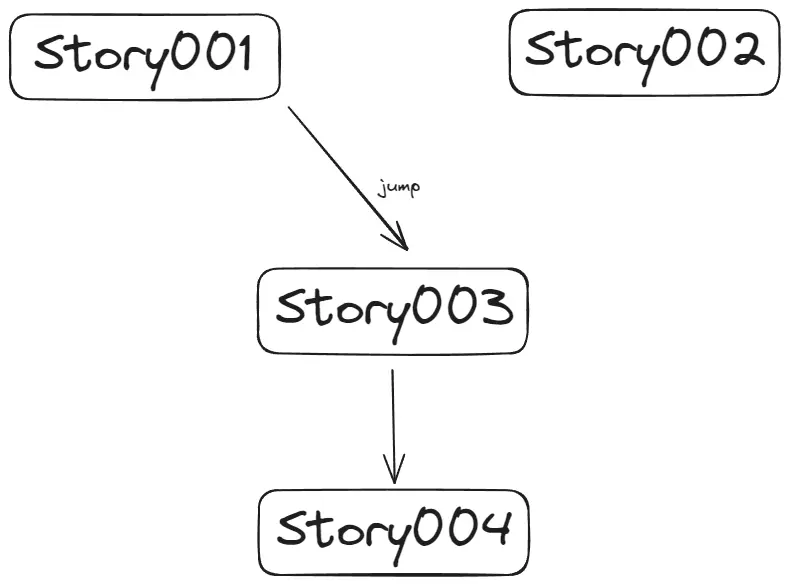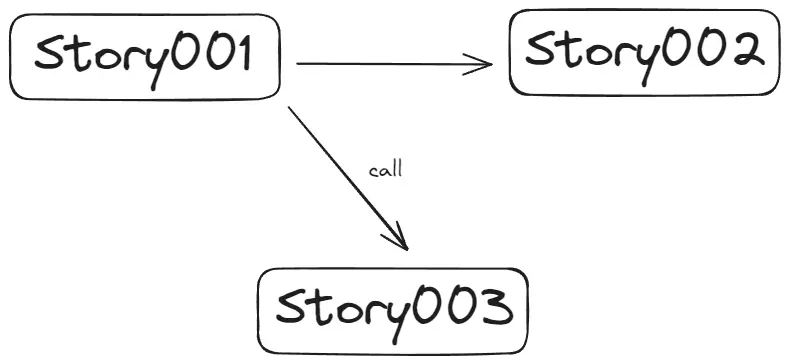Hi! I'm back with another Ren'Py tutorial, and today's topic is the difference between the jump and call commands in Renpy ~!
If you're new to game development and programming, you might be wondering why Ren'Py has both jump and call commands. What's the difference between them, and why do we need them?
While Ren'Py allows you to compile your entire project into a single file, it's often easier to manage your script by dividing it into separate files. This makes it simpler to locate specific scenes and organize your code.
Many visual novels offer branching storylines, allowing players to make choices and explore different paths. To navigate between these paths, you can use the jump command. This tells the code to find a specific label and start executing from that point.
However, there are times when jump isn't enough. Imagine you're creating a game with a central storyline or a day planner. You want to be able to return to a point after completing a specific scene without disrupting the ongoing gameplay.
That's where the call command comes in. It's like placing a bookmark in your code. When you call a label, the code execution jumps to that point. When you're done with the content at that label, you can use the return command to return to the point where you originally called it.
Renpy Jump Command
The jump Statement in ren'py:
What it does?: The jump statement is also used to transition between different parts of the story. Using jump, you can move from storyline A to storyline B
Syntax: jump label_name
label_name: The name of the label you want to jump to
Example:
jump next_story
- This will make the story jump to a label named
next_story. Once the storyline atnext_storyis finished, it will automatically continue to the next part of the story.
Analogy: It's like reading a book. You finish the first chapter and think, "Hmm, this is boring. I want to skip to the second-to-last chapter." So you jump ahead. After reading the second-to-last chapter, you may not care about the chapters you skipped, so you continue directly to the last chapter.
In simpler terms, jump allows you to skip ahead in your story, going directly to a specific point without going through the intermediate steps
Renpy Call Command
The call statement in ren'py:
What it does?: The call statement allows you to jump to a different part of your script and then return to the original position
How to use it:
- Syntax:
call label_namelabel_name: The name of the label you want to jump to- It will allowed you to go back to this point later
- Example:
call next_story- This will jump to a label named
next_story. Once the script atnext_storyis finished, it will return to the point wherecall next_storywas called
Analogy: Imagine you're reading a book. You reach the end of Chapter 1 and want to skip to the last chapter. So, you place a bookmark at the end of Chapter 1. You then flip to the last chapter and read it. When you're finished, you can go back to your bookmark (the end of Chapter 1) and continue reading from there. The call statement works similarly, allowing you to "bookmark" your place in the script
Summary:
callis used for temporary jumps in your script- It's like placing a bookmark and then returning to it later
- This is useful for creating branching storylines, subplots, or reusable sections of code
Why use call instead of jump?
- Preserving context:
callallows you to return to your original code easily - Avoiding unintended jumps: Using
jumpdirectly might lead to unexpected behavior, especially in complex scripts
When to Use Call / Jump in Renpy?
jump: Usejumpto move between major sections of your story or to create branching paths
Example:

As shown in the example above, you can clearly see that after jumping to another label, there's no return. So, once you jump to story003, story002 will be completely ignored.
call: Usecallfor reusable code blocks, like displaying menus or handling inventory
Example:

- If you use
callinstead ofjump,story002won't be ignored. However, the story won't directly jump fromstory003. Instead, it will first return tostory001and then continue from that point
A Practical Example:
Imagine you're creating a scene where the player enters a room and can choose to examine a chest or a bookshelf.
label room:
show background room
show character player at center
menu:
"Examine chest":
call examine_chest
jump story2
"Examine bookshelf":
call examine_bookshelf
jump story2
label examine_chest:
show chest at center
# Code to describe the chest and its contents
return
label examine_bookshelf:
show bookshelf at right
# Code to describe the bookshelf and its contents
return
label story2:
# some story
returnIn this example, jump would be used to move between different scenes, while call would be used to handle the actions of examining the chest or bookshelf.
FAQ: Some Common Questions
When should you use CALL or JUMP?
jump: Usejumpto move between major sections of your story or to create branching pathscall: Usecallfor reusable code blocks, like displaying menus or handling inventory
What is Renpy CALL function?
call: Think of call as a temporary detour. It jumps to a label, executes the code there, and then brings you back to where you were. This is great for reusable code blocks or handling specific actions without changing the main flow of your story
What is Renpy JUMP function?
jump: It takes you directly to another label, changing the scene or introducing a new section of your narrative. There's no going back to the previous location.
This is today's post, if you have any question regarding to the use of jump or call, feel free to reach out to use!
Check last episodes:
- 【Renpy Guide#004】 Basic Tutorial: Choice Menu / Create Branching Paths / Flags
- 【Renpy Guide#003】 Beginner Friendly Ren'py Basic Tutorial: Creating Your First Renpy Story
- 【Renpy Guide#002】 Beginner Friendly Ren'py Basic Tutorial: Ren'py Launcher
- 【Renpy Guide#001】 Beginner Ren'py Tutorial for new Visual Novel Game Dev
Check some more reference:


